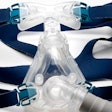The February issue of the Journal of the California Dental Association focuses on sleep disorders and their oral health connections, the California Dental Association (CDA) announced.
The article "Somnology 101: A Primer in Sleep Disorders, Their Impact on Society and a Role for Dentistry" introduces sleep disorders and identifies the dentist as an important part of the process of diagnosis and treatment.
"Sleep-disordered breathing is an enormous health problem," said Kerry Carney, DDS, editor-in-chief of the Journal, in a press release. "We've reached a point where there is scientific proof of effective treatments and the general public is aware of the dangers associated with untreated sleep-disordered breathing. Now dentists can step up and be key players in addressing specific sleep disorders."
"Medical Consequences and Associations With Untreated Sleep-related Breathing Disorders and Outcomes of Treatments" reviews the scientific literature that links sleep-related breathing disorders to various medical conditions, including hypertension, coronary artery disease, cardiac arrhythmias, stroke, diabetes mellitus, obesity, and depression.
As discussed in "Past, Present, and Future Use of Oral Appliance Therapies in Sleep-related Breathing Disorders," the ability of removable oral appliances to create and maintain a patent airway during sleep has resulted in the creation of a new area of interest in dentistry: dental sleep medicine.
"Neurology of Sleep and Sleep-related Breathing Disorders (SRBD) and Their Relationships to Sleep Bruxism" details the basic science of sleep physiology and how its disruption relates to dentistry. Concepts are presented that explain airway dynamics and how the jaw and tongue influence airway obstruction.
Finally, "Dentistry-based Approaches to Sleep-disordered Breathing, Algorithms and Multidisciplinary Perspectives" presents perspectives on sleep-related issues from various medical specialties with a goal to broaden the dentist's appreciation of this topic and open avenues of communication.















